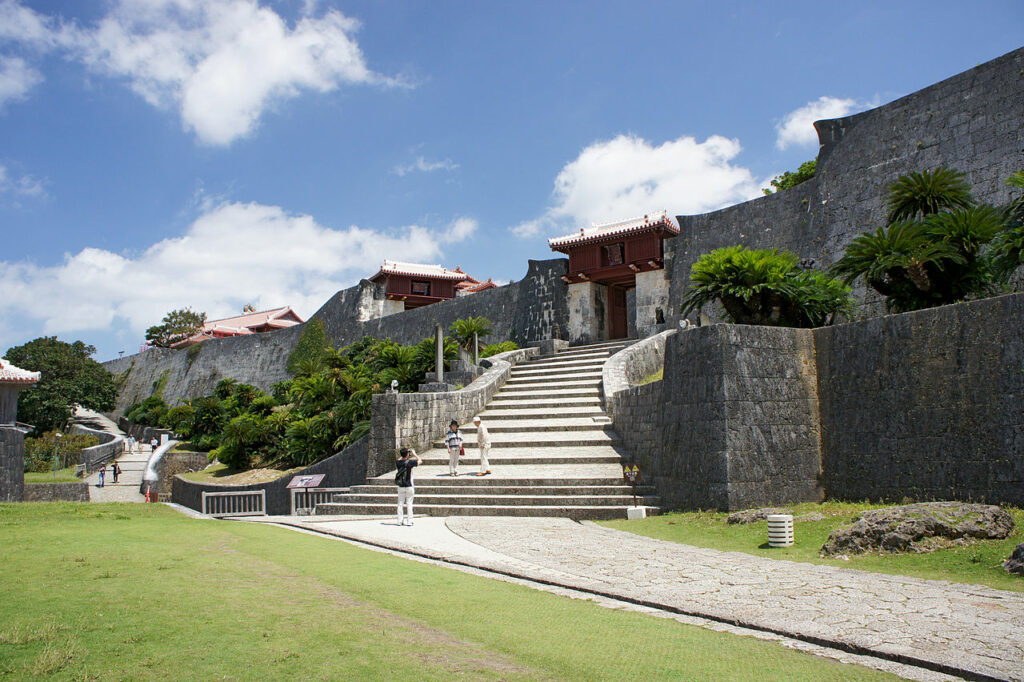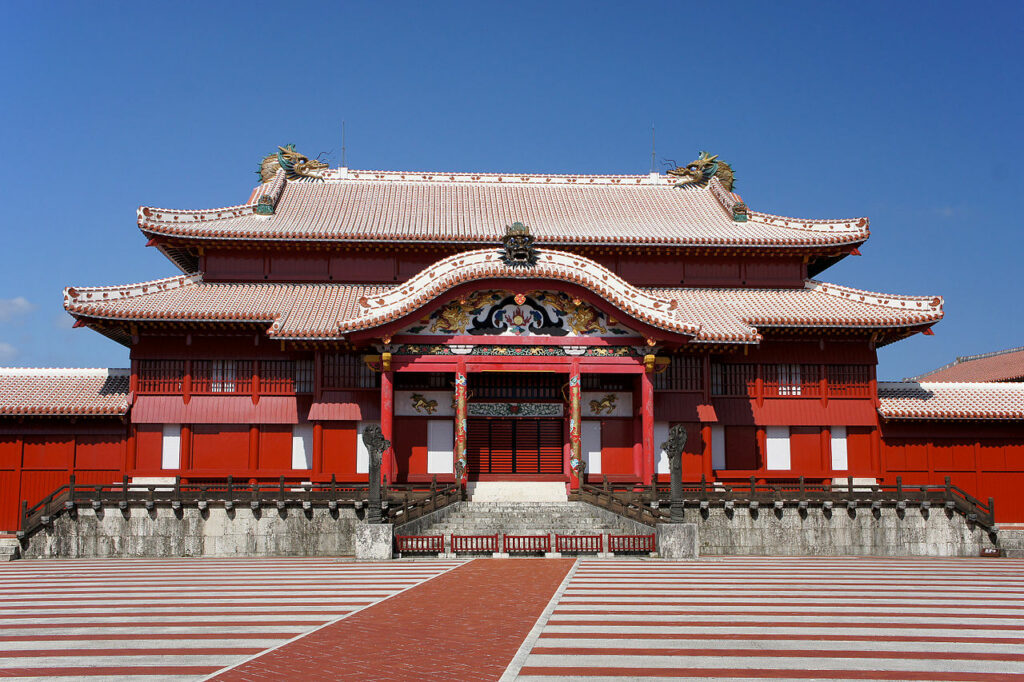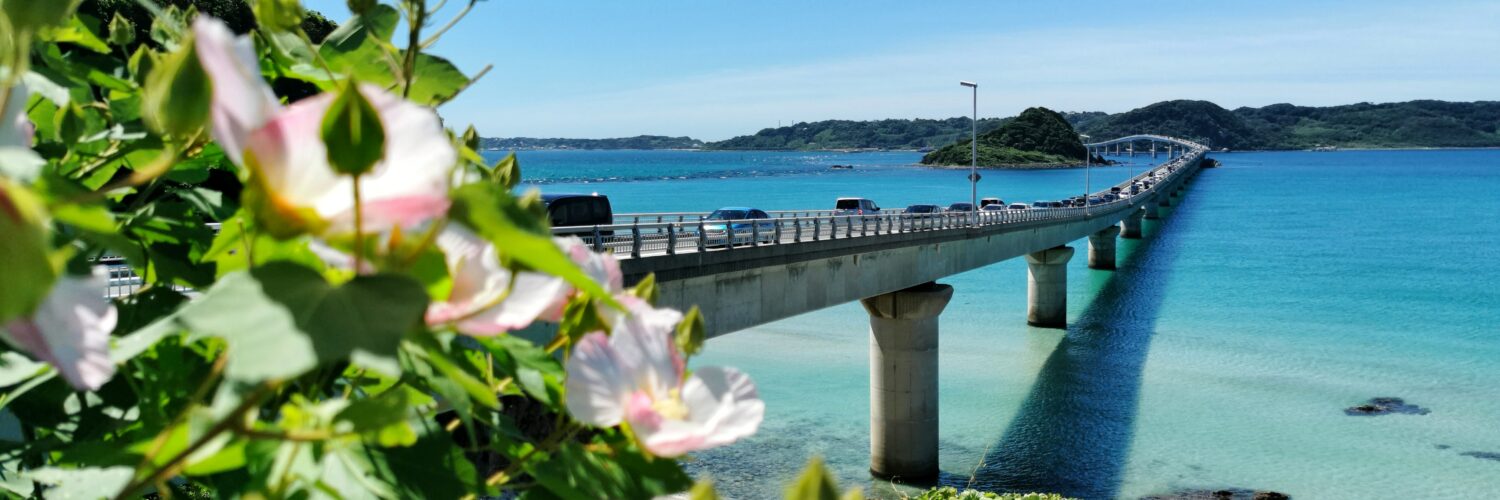For those who understand the geography of Japan, you would remember the Ryūkyū Islands to be a peaceful place with beautiful beaches and clear waters. Situated southwest of the Japanese archipelago, today’s Okinawa prefecture was once a bustling port country. A few centuries ago, a maritime kingdom existed facilitating trade within East Asia and Southeast Asia – the Ryūkyū Kingdom.
The Ryūkyū Islands have a unique culture and a rich history that is different from its Japanese counterparts. Before we get to the Ryūkyū Kingdom, we must first understand the history of the Ryūkyū Islands.
Early History of the Ryūkyū Islands
The first recorded mention of the Ryūkyū Islands dates back to the 7th century, and this was recorded in the Book of Sui during the Sui dynasty of China. However, archaeologists have discovered human remains dating back 32,000 years ago in present-day Naha, Okinawa prefecture. These were presumably the ancient ancestors of the modern-day Ryūkyūans, whose ancestry remains unknown.
Although having a different historical timeline, early Ryūkyūans were known to have been hunter-gatherers during the Jōmon period. However, they eventually moved nearer to the seashore during the Yayoi period – Ryūkyūans were probably engaged in fishing. They were also thought to have traded with Japan during this period.
Ryūkyūans began to move from the seashore to higher locations inland around the 12th century. Agricultural settlements were established in Gusukus – fortresses with stone walls. It was also around this time where trade between Ryūkyū settlements and other countries picked up. Porcelain was traded, and the Ryūkyū Islands became a crucial relay point.

In the mid-13th century, Hiragana was brought over from Japan and made part of the Ryūkyūan languages. At this time, the Mongols wanted to make the Ryūkyū Islands a tributary state but were refused by the Ryūkyūan king Eiso. The Ryūkyūans drove the Mongol envoys away when they went to the islands in the 1270s.
Sanzan Period
From 1322 to 1429, the Ryūkyū Islands entered a period of divided polities. This was known as the Sanzan period, where three polities co-existed on the islands. The polities were called Hokuzan, Chūzan and Nanzan.
This period helped the Shō family of Chūzan to consolidate their power. The last king of Chūzan, Shō Hashi, first conquered Hokuzan in 1416. Subsequently, he conquered Nanzan in 1429. With that, Shō Hashi effectively unified the three polities on the Ryūkyū Islands to form the Ryūkyū Kingdom. He then proceeded to become the first king of the kingdom.
Ryūkyū Kingdom
Early Ryūkyū Kingdom
With the unification of all three polities from the Sanzan period, Shō Hashi became the first king of the Ryūkyū Kingdom in 1429. The newly-founded kingdom then established a capital at Shuri castle, a Gusuku near modern-day Naha. Shō Hashi used the Chinese hierarchical court system in his new kingdom and built Naha harbour before he passed away in 1439.

After three generations of the Shō family rule, Shō Toku, the grandson of Shō Hashi, passed away. However, he did not have a male heir. As such, a palatine server who pretended to be Shō Toku’s adopted son came to rule. This pretender, Shō En, gained Chinese investiture and established the second Shō dynasty in 1470.
After Shō En died in 1477, his son Shō Shin rose to power. The reign of Shō Shin marks the two century-long golden age of maritime trade for the Ryūkyū Kingdom. As a tributary state of China, the kingdom was given ships by China for trading. Ryūkyūans were also allowed to study in Beijing and trade at Chinese ports under the Ming dynasty.
Between 1424 and the 1630s, 150 voyages were recorded in the official diplomatic compilation of the Ryūkyū Kingdom. This included voyages to Japan, Korea, China, Vietnam, and modern-day Philippines, Thailand, Malaysia and Indonesia. Ryūkyūan traders traded Japanese and Chinese goods for Southeast Asian ones.
During this time, many Chinese families immigrated to the Ryūkyū Kingdom to manage maritime trade. Most of these families originated from Fujian and assisted the Ryūkyūans in their diplomatic relations. However, the prosperity of the kingdom’s maritime trade died down in the early 17th century.
Satsuma Domination
The Satsuma Domain was one of the Japanese Tokugawa Shogunate’s Domains. The Satsuma Domain have been fighting with the Ryūkyū Kingdom over the northern Ryūkyū Islands since the mid-1400s. This effectively ended when Satsuma invaded Ryūkyū in 1409. Of course, The Satsuma Domain did not do this without meeting resistance – a three-month-long war between the two began.
Initially successful, Satsuma captured Nakijin castle and Urasoe castle. However, they failed to capture Naha, the port city of the kingdom. The fighting only ended as Satsuma captured Shuri castle and King Shō Nei. Shō Nei, together with many prized possessions, was brought over to Kagoshima, where he remained in captivity for two years. The Amami Islands of the Ryūkyū Kingdom were ceded to Satsuma, who then directly ruled over these islands.
At this point, the Ryūkyū Kingdom had two positions – a tributary state of China and a vassal of Japan. This made the kingdom a loophole for Japan to trade with China. The kingdom was under Satsuma influence for 200 years until Emperor Meiji abolished the domain system in 1871. The emperor then installed King Shō Tai as the head of the newly-formed Ryūkyū domain.
Ryūkyū Domain
The Ryūkyū domain was a short-lived domain from 1872 to 1879. With the king of the Kingdom now the head of the domain, this marked the gradual decline of the kingdom into a Japanese domain. However, things changed in 1874, when the Mudan incident occurred. The Japanese emphasised that the Mudan Incident was caused by the lack of influence of the Qing government of China over Taiwan. This strengthened the position of Japan as the protector of the Ryūkyūans.
Over the seven years, the Ryūkyū Kingdom’s administration changed from Japan’s Foreign Ministry to Home Ministry. Some Ryūkyūans who resisted Japanese rule fled to China to ask for the help of the Qing government. However, there was little done by the Chinese. With that, the Ryūkyū Kingdom was incorporated as part of Okinawa prefecture in March 1879.
Okinawa Prefecture
With the dissolution of the Ryūkyū Kingdom and the formation of Okinawa prefecture, King Shō Tai was made to move to Tōkyō. Royal supporters of the Ryūkyū Kingdom escaped to China. Shō Tai was given a rank of Kazoku and lived in Tōkyō up till his death in 1901. His descendants continue to live in Tōkyō today.
The annexation was met with hostility from Ryūkyūans, and Ryūkyūans were forced to assimilate into the Japanese culture. Such examples included the elimination of the Ryūkyūan languages and culture.
Conclusion
The history of the Ryūkyū Islands does not just stop here. There were many incidents after the annexation of Okinawa that occurred, including the Battle of Okinawa in the Second World War. However, the history of the Ryūkyū Kingdom played a significant role in determining what the Ryūkyū Islands are today.
So, the next time you hear about Okinawa, remember that the beautiful beaches you see today were once part of a major historical kingdom – one that was a major maritime trading centre for the whole region.





Add comment